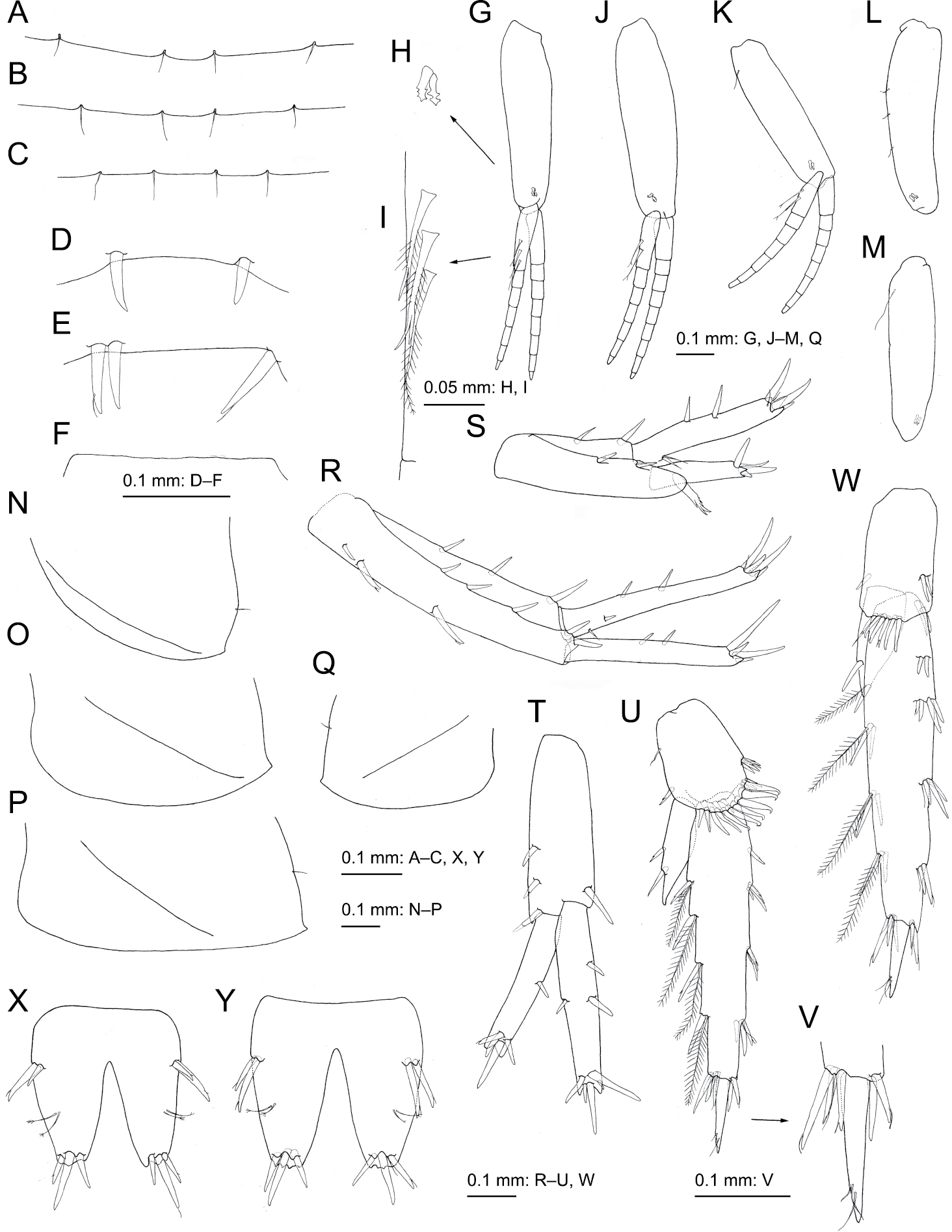
|
||
|
Eoniphargus toriii sp. nov., male holotype (NSMT-Cr 16652), female paratype (NSMT-Cr 16653) A–C dorsal margins of pleonites 1–3, dorsal views D–F dorsal margins of urosomites 1–3, dorsal views G pleopod 1 (plumose setae on rami are omitted), medial view H retinacula of pleopod 1, medial view I bifid setae of pleopod 1, medial view J pleopod 2 (plumose setae on rami are omitted), medial view K pleopod 3 (plumose setae on rami are omitted), medial view L pleopod 1 (female, rami are omitted), medial view M pleopod 2 (female, rami are omitted), lateral view N–P epimeral plates 1–3, lateral views Q epimeral plate 2 (female), lateral view R uropod 1, dorsal view S uropod 2, dorsal view T uropod 2 (female) , dorsal view U uropod 3, ventral view V terminal article of outer ramus of uropod 3, ventral view W uropod 3 (female), ventral view X telson, dorsal view Y telson (female), dorsal view L, M, Q, T, W, Y female; others, male. Modified from Tomikawa et al. (2007). |